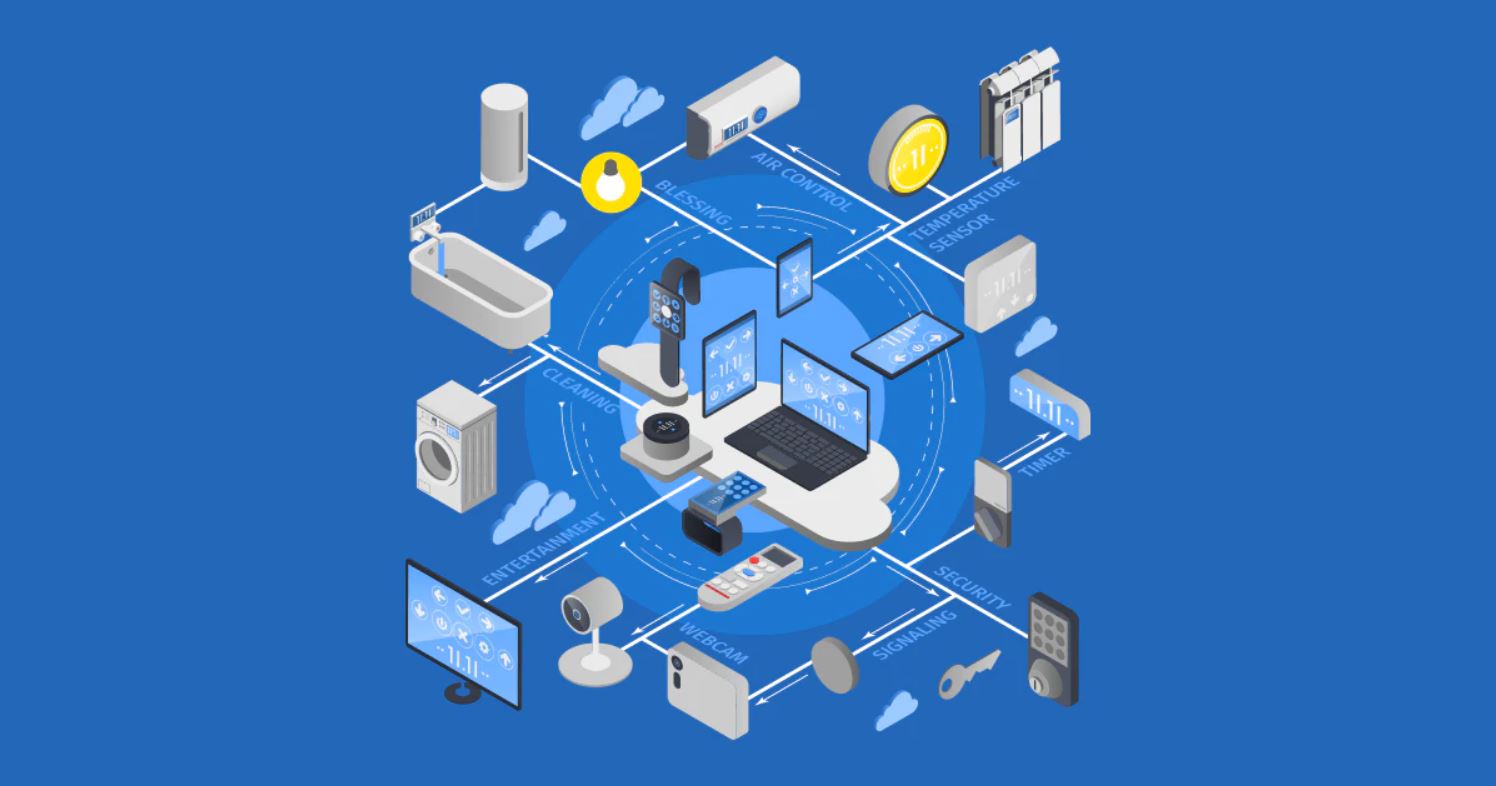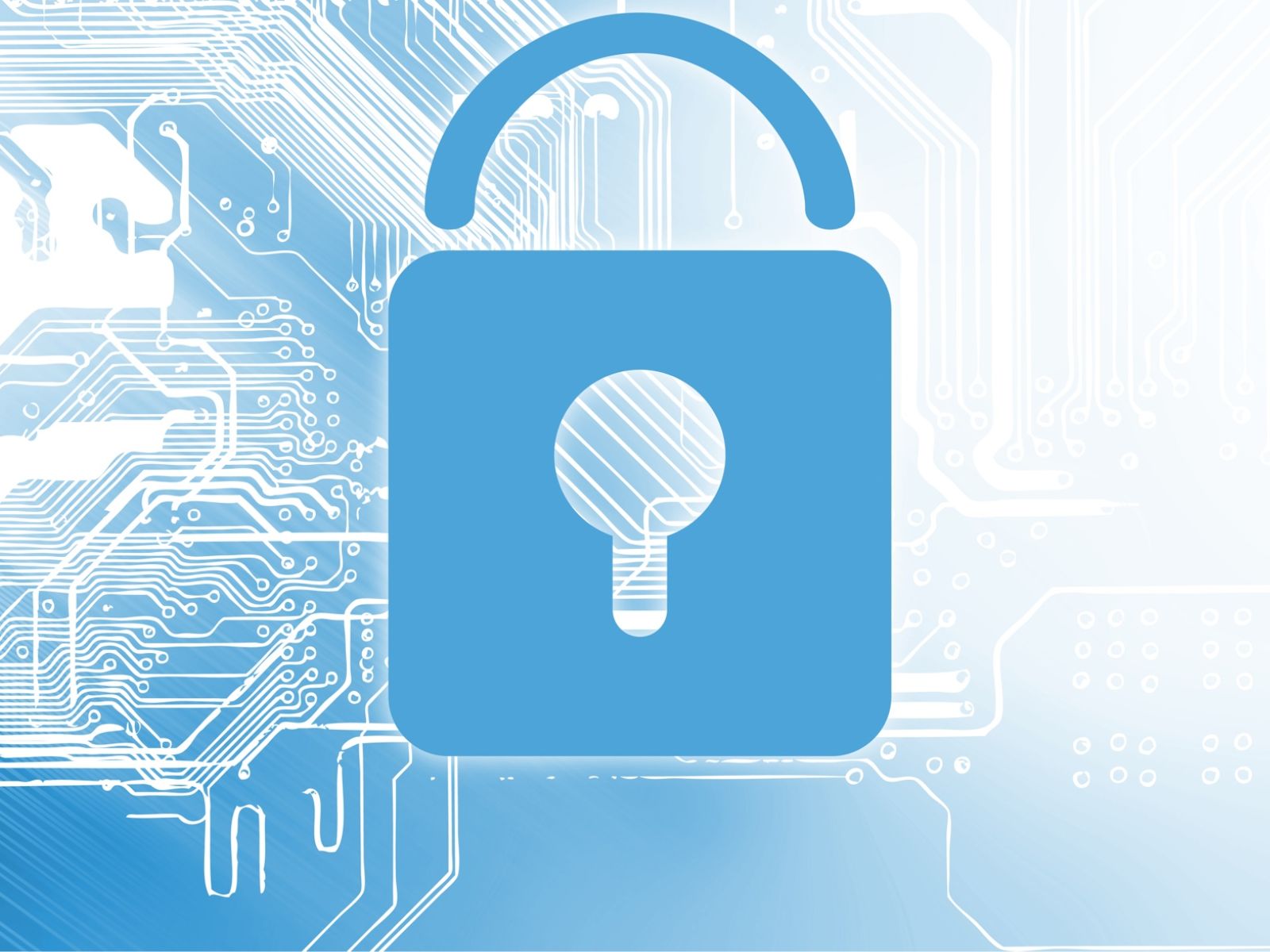Introduction
With the rise of the Internet of Things (IoT), our homes, offices, and cities are becoming more interconnected than ever before. While this connectivity brings great convenience and efficiency, it also introduces new security risks. IoT devices, ranging from smart thermostats to webcams and beyond, are vulnerable to hacking attempts. If these devices are not properly secured, hackers can gain access to personal information, infiltrate home networks, or even control the devices themselves.
It is essential for users to take proactive measures to protect their IoT devices from potential hackers. By implementing a set of best practices and following some simple guidelines, individuals can greatly enhance the security of their IoT network. In this article, we will outline some key steps to bolster the security of IoT devices and help users safeguard their digital privacy.
One of the fundamental aspects of securing IoT devices is using strong and unique passwords. Many IoT devices come with default credentials, such as “admin” and “password,” which are widely known and easily exploitable. Users should change these default passwords to complex, unique combinations that include a mix of letters, numbers, and symbols.
Furthermore, it is crucial to regularly update the software running on IoT devices. Manufacturers release firmware updates to address security vulnerabilities and enhance device performance. By keeping devices up to date, users can mitigate the risk of future exploits and ensure that they are using the latest security features.
To add an extra layer of protection, enabling two-factor authentication is highly recommended. This means that, in addition to a password, users must provide a second form of verification, such as a fingerprint or a text message code, to access their IoT devices. Two-factor authentication makes it significantly harder for hackers to gain unauthorized access.
Another security measure to consider is disabling Universal Plug and Play (UPnP). UPnP can automatically open ports on routers and allow devices to communicate with one another. Unfortunately, this convenience can also be exploited by hackers. Disabling UPnP reduces the attack surface and helps prevent unauthorized access to IoT devices.
Securing the home network is another vital aspect of protecting IoT devices. Users should change the default login and password for their Wi-Fi router, as well as establish a strong encryption protocol such as WPA2-AES. Additionally, network segmentation is recommended, allowing IoT devices to be isolated from other devices on the network, further limiting potential access points for hackers.
Use Strong Passwords
When it comes to securing IoT devices, one of the simplest yet most effective steps you can take is to use strong and unique passwords. Many IoT devices come pre-configured with default credentials, such as “admin” and “password,” which are well-known and easily guessed by hackers. By changing these default passwords to something strong and unique, you greatly reduce the risk of unauthorized access to your devices.
A strong password should be at least eight characters long and include a combination of uppercase and lowercase letters, numbers, and special characters. Avoid using common words, phrases, or easily guessable personal information such as your birthday or pet’s name. Instead, opt for a random combination of characters that is difficult to predict.
Furthermore, it is important to use different passwords for each IoT device you own. Reusing passwords across multiple devices or online accounts can be a significant security risk. If one device is compromised and the password is reused elsewhere, hackers can easily gain access to your other devices or accounts. By using unique passwords for each device, you limit the potential impact of a security breach.
Remembering multiple complex passwords can be challenging, so consider using a password manager. A password manager securely stores all your passwords in one place and allows you to generate and retrieve strong passwords with ease. It eliminates the need to remember numerous passwords, making it more convenient and less likely for you to resort to weak or easily guessable passwords.
Another crucial aspect of password security is changing your passwords regularly. Regularly refreshing your passwords helps ensure that even if a password is compromised, the window of opportunity for hackers is minimized. Set a reminder to update your passwords every few months or whenever there is a major security breach that may expose your credentials.
Lastly, keep in mind that a strong password alone is not sufficient if you leave it written down or easily accessible. Avoid storing passwords on notes, in your phone’s memo app, or in any other insecure locations. Instead, rely on a trusted password manager or consider using password-protected encrypted storage options to keep your passwords secure.
By using strong, unique passwords for your IoT devices and updating them regularly, you significantly reduce the risk of unauthorized access and protect your devices from potential security breaches. Take the time to implement this simple yet effective security measure to safeguard your IoT devices and the valuable data they hold.
Update Software Regularly
Keeping your IoT devices updated with the latest software is crucial for maintaining their security. Manufacturers regularly release firmware updates that often include important security patches, bug fixes, and performance improvements. Failure to update the software on your IoT devices leaves them vulnerable to known security vulnerabilities, making them an easy target for hackers.
When a manufacturer becomes aware of a security flaw in their device, they work diligently to develop a fix and release it as a software update. By applying these updates promptly, you can address any vulnerabilities and protect your devices from potential exploitation. Ignoring software updates leaves your IoT devices exposed to known issues that malicious actors may try to exploit.
Most IoT devices have a built-in mechanism for checking and installing software updates automatically. However, it is important to verify that this feature is enabled and functioning correctly. Check the device settings or consult the device’s user manual to ensure that you are receiving and installing the latest updates.
In addition to firmware updates, also keep an eye out for updates to any companion mobile apps or software that accompany your IoT devices. These updates often include important security enhancements and compatibility improvements, so remember to regularly check for updates through your device’s respective app store or software update settings.
Not only do software updates bring security fixes, but they also improve the overall functionality and performance of your IoT devices. By staying up to date, you can take advantage of new features introduced by the manufacturer and enjoy a better user experience.
While it can be tempting to ignore software update notifications or postpone them until later, it is important to prioritize these updates. Set reminders or enable automatic updates whenever possible to ensure that your IoT devices are always running the latest software versions.
By regularly updating the software on your IoT devices, you significantly reduce the risk of falling victim to security breaches and ensure that your devices are operating at their optimal level. Make it a habit to check for updates regularly and promptly apply them to keep your IoT devices secure and up to date.
Enable Two-Factor Authentication
Two-factor authentication (2FA) is a powerful security measure that adds an extra layer of protection to your IoT devices. By enabling 2FA, you require users to provide two forms of verification to access their devices, typically a combination of something they know (such as a password) and something they have (such as a unique code sent to their mobile device).
2FA greatly reduces the risk of unauthorized access even if an attacker manages to obtain or guess your password. Without the second form of verification, they won’t be able to gain access to your IoT devices. This additional step makes it significantly more difficult for hackers to breach your device security.
Many IoT devices and their associated apps now offer support for 2FA. To enable this feature, navigate to the device or app settings and locate the 2FA option. You will typically be prompted to provide your phone number or install an authenticator app like Google Authenticator or Authy.
Once 2FA is enabled, you will need to enter your password as usual when logging in. Then, you will be prompted to provide the second verification factor, which can be a unique code generated by your authenticator app or sent to your mobile device via SMS.
It is important to choose a reliable and secure method for receiving the second factor of verification. While SMS can be convenient, it is relatively less secure compared to using an authenticator app. Authenticator apps generate time-sensitive codes that are unique to your device, making it less susceptible to interception by hackers.
Enabling 2FA might require a bit of extra effort each time you log in to your IoT devices, but the enhanced security it provides is worth it. The inconvenience of an extra step is far outweighed by the peace of mind knowing that even if your password is compromised, your devices remain secure.
Remember to keep your authentication app or phone number secure as well. Treat these access credentials with the same level of care as your passwords and refrain from sharing them with others.
By enabling 2FA on your IoT devices, you significantly strengthen their security posture and minimize the risk of unauthorized access. Take advantage of this feature whenever available to ensure that only authorized individuals can interact with your IoT devices and protect your sensitive data from potential breaches.
Disable Universal Plug and Play (UPnP)
Universal Plug and Play (UPnP) is a feature that allows devices on your network to discover and communicate with each other seamlessly. While UPnP can be convenient for certain applications, it also poses a potential security risk for IoT devices. Disabling UPnP can help reduce the attack surface and protect your devices from unauthorized access.
UPnP automatically opens ports on your router, allowing devices to connect and communicate with each other without any manual configuration. Unfortunately, this convenience can also be exploited by hackers. By taking advantage of vulnerabilities in UPnP implementations, attackers can gain unauthorized access to your IoT devices or even your entire network.
To disable UPnP, access your router’s admin interface by typing the router’s IP address into a web browser. The IP address and login information can typically be found on the back of the router or in the user manual. Once logged in, navigate to the UPnP settings and disable the feature.
Keep in mind that some devices rely on UPnP to function properly, so disabling it may cause compatibility issues. In such cases, consider limiting UPnP functionality to only the necessary devices or applications. For example, some gaming consoles require UPnP to enable online multiplayer functionality. By selectively enabling UPnP for specific devices, you can enjoy the benefits while reducing the risk on other less critical devices.
It’s worth noting that disabling UPnP on your router does not completely secure your IoT devices. Other security measures, such as strong passwords and firmware updates, are still essential. However, by disabling UPnP, you remove an easy entry point for potential attackers, making it harder for them to gain unauthorized access to your network and IoT devices.
If you are unsure about how to disable UPnP on your router or if you have a more complex network setup, consult your router’s manual or contact your internet service provider for guidance. They can provide specific instructions based on your router model.
By disabling Universal Plug and Play (UPnP) on your router, you enhance the security of your IoT devices and reduce the risk of unauthorized access. Take this important step to help safeguard your network and protect your sensitive data from potential malicious actors.
Secure Your Home Network
Securing your home network is a crucial step in protecting your IoT devices from potential hackers. A secure network provides a strong foundation for keeping your devices and personal information safe. Here are some key practices to implement to enhance the security of your home network.
First and foremost, change the default login and password for your Wi-Fi router. Default login credentials are often widely known and can be easily exploited by attackers. By setting a unique and strong password, you add a layer of protection to your network, making it more difficult for unauthorized individuals to gain access.
In addition to changing the router password, it is essential to use a strong encryption protocol for your Wi-Fi network. Wireless Protected Access 2 (WPA2) with the Advanced Encryption Standard (AES) is currently the recommended standard. This encryption method safeguards the data transmitted between your devices and your router, preventing unauthorized interception.
Another practice to make your home network more secure is to disable any unnecessary network services and protocols. Many routers offer features like remote administration, port forwarding, or Wi-Fi Protected Setup (WPS). While these features can be convenient, they also introduce potential security vulnerabilities. Disable any services or protocols that you don’t need or use regularly to minimize the attack surface and potential entry points for hackers.
Network segmentation is another useful security measure. By creating separate network segments or VLANs for different types of devices, you can isolate your IoT devices from other devices on your network. This ensures that even if one device is compromised, the rest of your network remains protected. Some routers offer built-in support for VLANs, while others may require additional configuration or a separate network switch.
Regularly updating your router’s firmware is critical for maintaining network security. Router manufacturers release firmware updates that address security vulnerabilities, improve performance, and introduce new features. Often, these updates include patches for known vulnerabilities in the router’s software. Check the manufacturer’s website or the router’s admin interface for firmware updates and apply them promptly to keep your router protected.
Lastly, consider implementing a guest network for visitors. Guest networks provide a separate network for guests to connect to, keeping them isolated from your main network. This prevents potential unauthorized access to your IoT devices and personal data.
By following these practices, you can create a more secure home network and better protect your IoT devices from potential security breaches. Remember to regularly review and update your network security measures to stay ahead of emerging threats and keep your devices and personal information safe.
Use a Firewall
Using a firewall is an essential step in securing your home network and IoT devices. A firewall acts as a barrier between your network and the external internet, monitoring and controlling incoming and outgoing network traffic. It serves as a filter, allowing legitimate communication while blocking unauthorized access and potential threats.
Most routers come with built-in firewall capabilities, commonly known as a network firewall or a router firewall. These firewalls provide a basic level of protection by examining the data packets entering and leaving your network. They use predefined rules to determine if the traffic is safe, and if not, the firewall blocks it from entering your network.
It’s important to ensure that your firewall is enabled and properly configured. By default, many routers have the firewall enabled, but it’s worth double-checking to ensure it is not disabled accidentally. Access your router’s admin interface and navigate to the firewall settings. Here, you’ll typically find options to enable or disable the firewall as well as additional settings for customization.
In addition to the built-in router firewall, consider using a software firewall on each of your devices. Software firewalls provide an extra layer of protection by monitoring and controlling the traffic that enters and exits the specific device they are installed on. They can help detect and block unauthorized access attempts and malicious network traffic.
When configuring your firewall settings, it’s important to strike a balance between security and usability. Some firewalls have advanced features that allow you to create specific rules and profiles for different types of network traffic. However, be cautious when customizing firewall settings, as overly strict rules may unintentionally block legitimate traffic or interfere with the normal operation of your IoT devices.
Regularly updating your firewall software is crucial for maintaining its effectiveness. Firewall vendors often release updates to address new security threats and vulnerabilities. Check for updates regularly or enable automatic updates to ensure you have the latest security patches and enhancements.
Remember that a firewall should be just one part of your overall security strategy. It provides an important layer of protection, but it does not guarantee complete security. Complementing your firewall with other security measures, such as strong passwords, firmware updates, and network segmentation, further strengthens your network’s security posture.
By using a firewall, both at the router level and on your individual devices, you establish a strong defense against unauthorized access and potential security threats. Take the time to configure and update your firewall settings to maximize its effectiveness and protect your home network and IoT devices from potential breaches.
Disable Remote Access
Disabling remote access is an important security measure to protect your IoT devices from potential unauthorized access. Many IoT devices come with remote access capabilities, allowing you to control them from anywhere via the internet. While this convenience might seem advantageous, it can also create a significant security vulnerability if not properly managed.
Remote access allows you to interact with your IoT devices even when you are not on the same network. However, it also means that these devices are exposed to the internet, making them potential targets for hackers. By disabling remote access, you greatly reduce the attack surface and strengthen the security of your IoT devices.
Access your device settings or app preferences to disable remote access. Look for options related to remote management, remote control, or remote access. Disable these features to ensure that your devices can only be accessed locally on your home network.
Be aware that disabling remote access might limit some functionalities that rely on remote control. For example, if you use a mobile app to control your smart home devices while you’re away, disabling remote access would prevent that functionality. Consider the trade-off between convenience and security when making the decision to disable remote access.
If you need remote access for specific purposes, such as troubleshooting or monitoring, consider enabling it temporarily when necessary and disabling it once the task is completed. This limits the exposure of your devices and minimizes the potential risk. Make sure to review and update the settings regularly to ensure that remote access remains disabled when not needed.
In cases where remote access is crucial, enable it only through secure and trusted methods. Avoid using default ports or unencrypted protocols. Instead, use encryption protocols such as SSL/TLS or a virtual private network (VPN) to establish a secure connection between your devices and the remote access service.
It’s worth noting that remote access is just one aspect of securing your IoT devices. Other security measures, such as strong passwords, regular firmware updates, and network segmentation, should still be implemented to provide comprehensive protection.
By disabling remote access, you significantly reduce the exposure of your IoT devices to potential threats and unauthorized access. Evaluate the necessity and security implications of remote access for each device, and make informed decisions to strike a balance between convenience and security.
Be Cautious with Public Wi-Fi Networks
Using public Wi-Fi networks can be convenient when you’re on the go, but it also poses significant security risks, especially when it comes to IoT devices. Public Wi-Fi networks are often unsecured, making it easier for hackers to intercept data and gain unauthorized access to connected devices. To protect your IoT devices and personal information, it’s essential to exercise caution when connecting to public Wi-Fi networks.
Avoid connecting your IoT devices to public Wi-Fi networks whenever possible. Since these networks lack proper security measures, any data transmitted between your device and the network is potentially vulnerable to interception by cybercriminals. Instead, rely on your mobile data network or set up a personal hotspot with your smartphone to provide a more secure connection for your devices.
If connecting to public Wi-Fi is unavoidable, there are additional steps you can take to minimize the risk. First, ensure that your IoT devices have the latest firmware updates installed. Manufacturers often release updates to address security vulnerabilities and strengthen device security. Keeping your devices updated ensures they have the best possible protection against potential threats.
Consider using a virtual private network (VPN) when connecting your IoT devices to public Wi-Fi networks. A VPN creates an encrypted tunnel between your device and the VPN server, effectively securing your data even when connected to an unsecured network. By encrypting your device’s internet traffic, a VPN adds an extra layer of protection and helps safeguard your information from prying eyes.
Another crucial step is disabling any unnecessary network services and features on your IoT devices when connected to public Wi-Fi. Close any open ports, disable file sharing, and turn off any remote access features. Minimizing the potential attack surface on your devices reduces the risk of unauthorized access and potential data breaches.
Always be cautious about the websites you visit and the information you access while connected to public Wi-Fi networks. Avoid logging into sensitive accounts or providing personal information unless you are using a secure and encrypted connection. Exercise extra vigilance and be mindful of potential phishing attacks or malicious websites that may attempt to steal your information.
Lastly, it’s important to regularly review your IoT devices’ network settings and reset them to their default configurations once you are back on a secure network. This step ensures that any temporary changes made to adapt to the public Wi-Fi environment are undone, reducing the chances of accidental exposure or unauthorized access.
By being cautious with public Wi-Fi networks and taking these precautionary measures, you can help protect your IoT devices from potential security risks while using unsecured networks. Minimize your reliance on public Wi-Fi whenever possible, and prioritize the security and privacy of your IoT devices and personal information.
Encrypt Data
Encrypting data is a crucial component of securing your IoT devices and protecting your sensitive information from potential unauthorized access. Encryption transforms your data into a format that can only be read by authorized individuals who possess the decryption key. By implementing encryption measures, you add an extra layer of security to your data, making it much more difficult for hackers to decipher and exploit.
There are two primary forms of encryption: data at rest and data in transit.
Data at rest encryption involves securing data that is stored on your IoT devices, including personal information, credentials, and configuration settings. Most modern IoT devices offer automatic encryption of stored data, but it is essential to verify and enable this feature, if needed. By encrypting stored data, even if someone gains physical access to your device, they will not be able to extract sensitive information without the appropriate decryption key.
Data in transit encryption, as the name suggests, focuses on securing data as it is being transmitted between your IoT devices and other systems or the internet. This is particularly important when communicating over untrusted networks, such as public Wi-Fi. To achieve data in transit encryption, use secure communication protocols such as HTTPS, SSL/TLS, or SSH. These protocols establish an encrypted connection between your device and the receiver, ensuring that any data transmitted cannot be intercepted and understood by unauthorized individuals.
When configuring your IoT devices, prioritize the use of secure and encrypted communication protocols. Ensure that your devices and accompanying apps, as well as any cloud-based services they interact with, support encryption. Regularly update the firmware and software on your devices to benefit from the latest encryption enhancements and security patches.
It’s important to note that encryption alone does not guarantee absolute security. It should be used in conjunction with other security measures such as strong passwords, regular firmware updates, and secure network configurations to provide comprehensive protection for your IoT devices.
Lastly, as a user, it’s essential to understand and manage the encryption keys associated with your devices and systems. Encryption keys are used to encrypt and decrypt your data. Keep the keys secure and back them up in a separate, safe location to prevent data loss or unauthorized access.
By encrypting data on your IoT devices and implementing secure communication protocols, you significantly enhance the security of your devices and protect your sensitive information from potential breaches. Prioritize encryption as an integral part of your overall security strategy, and maintain a proactive approach to staying up to date with the latest encryption technologies and practices.
Disable Unused Features
When it comes to securing your IoT devices, one often overlooked but important step is to disable any unused features or services. IoT devices come with a range of built-in functionalities, many of which you may never use or need. Leaving these unused features enabled poses unnecessary security risks. By disabling them, you can reduce the attack surface and minimize the potential vulnerabilities in your devices.
Start by reviewing the settings and options available for each of your IoT devices. Look for features that you don’t use or need, such as remote access, file sharing, or voice assistant integration. These features, while convenient, may create additional avenues for potential exploitation by hackers.
If you rarely use remote access functionality, it is advisable to disable it. Remote access allows you to control your IoT devices from outside your local network. However, if left enabled and unsecured, it can provide an entry point for hackers to gain unauthorized access to your devices. By disabling remote access, you limit the potential attack vectors and protect your devices from remote exploitation.
Similarly, if your IoT device supports file sharing, disable this feature unless you have a specific need for it. File sharing can inadvertently expose sensitive information or provide avenues for unauthorized access. It is always best to rely on more secure file sharing methods, such as cloud storage services or secure local network protocols, rather than relying on the file sharing functionality enabled on your IoT devices.
Voice assistant integration has become a popular feature in many IoT devices. While it provides convenience, it also presents potential security risks. Voice assistants are always listening, waiting for the trigger word or command. Disabling the voice assistant integration when not in use mitigates the risk of accidental or unauthorized activation and potential eavesdropping.
It’s important to note that disabling unused features should be done thoughtfully. Some features may be essential for your IoT devices to function optimally. Therefore, assess the necessity of each feature individually and consider the potential security implications. For features that are necessary but not actively used, ensure that they are configured securely and kept up to date with the latest firmware updates.
Regularly review your IoT device settings and disable any features or services that are not required. This will not only minimize the potential attack surface but also improve device performance by reducing overhead and unnecessary network traffic. Take an active role in managing the features enabled on your IoT devices to enhance their security posture.
Remember that disabling unused features is just one aspect of securing your IoT devices. Strong passwords, regular firmware updates, and network security measures should be implemented alongside feature management to comprehensively protect your devices and personal data.
By disabling unused features on your IoT devices, you minimize potential attack vectors and reduce the risk of unauthorized access. Regularly review your device settings and make informed decisions about which features are truly necessary for your needs, ensuring a more secure and streamlined IoT experience.
Monitor IoT Device Activity
Monitoring the activity of your IoT devices is a crucial part of maintaining their security and protecting your network. By closely monitoring device activity, you can identify any suspicious behavior or unauthorized access attempts, allowing you to take appropriate action in a timely manner.
One way to monitor IoT device activity is by reviewing the device logs. Most IoT devices maintain logs that record important events, such as device connections, firmware updates, or configuration changes. Regularly check these logs to identify any anomalies or unexpected activities. Abnormal patterns, such as frequent login attempts or unusual network traffic, may indicate a potential security breach.
Enable email or push notification alerts for critical events on your IoT devices. By configuring these alerts, you can receive instant notifications when specific actions occur, such as a new device connection or a failed login attempt. These alerts can help you stay vigilant and quickly respond to any potential security incidents.
In addition to device-specific monitoring, consider using network monitoring tools or applications that provide a comprehensive view of all devices connected to your network. These tools can help identify IoT devices, track their activity, and detect any suspicious behavior or patterns across your network. They can also provide insights into bandwidth usage, network performance, and possible security issues.
Keep an eye on your home network traffic to identify any unexpected or unusual data flows. Unusual spikes in network activity or connections to unfamiliar IP addresses could be signs of a security breach or unauthorized access attempts. Network monitoring tools or firewalls with intrusion detection systems (IDS) can assist in detecting these anomalies.
Regularly review your device’s firmware and software updates. Manufacturers often release updates that address security vulnerabilities and provide enhanced features. Stay informed about the latest security advisories and ensure that your IoT devices are running the most up-to-date software versions.
Lastly, familiarize yourself with the normal behavior of your IoT devices. Establish a baseline for their typical operations, such as network traffic patterns or data usage, and monitor for any deviations from the norm. Any significant changes in device behavior could be indicative of a security issue.
By monitoring the activity of your IoT devices, you can quickly identify and respond to security threats. Regularly review device logs, enable alerts, leverage network monitoring tools, and stay vigilant for any suspicious behavior. Adopting a proactive approach to device monitoring will help ensure the security and integrity of your IoT devices and network.
Use a VPN
When it comes to protecting your IoT devices and preserving your online privacy, using a Virtual Private Network (VPN) is an effective and valuable tool. A VPN establishes an encrypted tunnel between your device and the internet, ensuring that your data remains secure and private. By using a VPN, you can add an extra layer of protection to your IoT devices and safeguard your sensitive information.
One of the primary benefits of using a VPN is that it masks your IP address. Normally, when you connect to the internet, your IP address is visible to the websites you visit and potentially to anyone monitoring your network. With a VPN, your traffic is routed through a server located in a different geographical location, making it appear as if you are browsing from that location. This effectively protects your identity and helps preserve your privacy.
When connecting to public Wi-Fi networks, such as those found in cafes, airports, or hotels, using a VPN is particularly important. Public Wi-Fi networks are often unsecured, making it easier for hackers to intercept data and potentially gain access to your IoT devices. By using a VPN, your data is encrypted, preventing unauthorized interception and safeguarding your IoT devices and personal information.
Another advantage of using a VPN is that it can bypass geographical restrictions and censorship. Some IoT devices and services may be limited or unavailable based on your location. By connecting to a VPN server in a different country, you can access content and services that may otherwise be blocked or restricted in your region. This can be particularly useful when using IoT devices that rely on specific online services or platforms.
When selecting a VPN service, it’s important to choose a reputable and trustworthy provider. Look for VPN providers that have a strong track record of respecting user privacy and maintaining a secure network infrastructure. Consider factors such as the number and location of servers, encryption protocols used, and any additional security features offered.
Once you have chosen a VPN provider, install and configure their application or client on your devices. In most cases, connecting to a VPN is as simple as selecting a server location and clicking the connect button. However, it’s important to remember to keep the VPN app or client updated to ensure that you have the latest security patches and features.
But, it’s worth noting that while using a VPN provides an added layer of security and privacy, it does not make your IoT devices invincible. It should be used in conjunction with other security measures, such as strong passwords, regular firmware updates, and secure network configurations, to provide comprehensive protection.
By using a VPN, you can enhance the security and privacy of your IoT devices, safeguard your data from potential interception, and access restricted online content. Take the time to select a reliable VPN provider, configure it correctly, and stay aware of the potential benefits and limitations of using a VPN for your IoT devices.
Implement Network Segmentation
Implementing network segmentation is a critical step in ensuring the security of your IoT devices and protecting your network infrastructure. Network segmentation involves dividing your network into smaller, isolated segments, or VLANs (Virtual Local Area Networks), to create barriers between different devices and limit potential attack vectors.
By segmenting your network, you can isolate your IoT devices from other devices on the network, such as computers or smartphones. This segregation ensures that even if one device is compromised, the attacker’s access is limited to that specific segment, reducing the overall impact and preventing lateral movement within your network.
To implement network segmentation, you will need a router or switch with VLAN functionality. Assign different IoT devices to separate VLANs based on their intended purpose, location, or level of sensitivity. For example, you can group smart home devices in one VLAN and industrial IoT devices in another. This separation provides an added layer of security by limiting communication between different groups of devices.
By isolating IoT devices in their own VLANs, you can apply specific security policies and access controls to each segment. This allows for more granular control over communication and helps prevent unauthorized access or potential breaches. For example, you may restrict communication between different VLANs, only allowing necessary traffic to pass through designated gateways or firewalls.
It is crucial to implement strong network segregation practices and regularly review and update your VLAN configurations. Ensure that appropriate firewall rules are in place to control the traffic between VLANs and that access controls are properly configured to allow only authorized devices or users to communicate with specific segments.
Network segmentation is particularly essential when dealing with critical IoT devices, such as those used in industrial or healthcare settings. These devices often have stringent security requirements due to the sensitive nature of the data they handle. By segregating them into dedicated VLANs, you can apply strict security policies and closely monitor network traffic within those segments.
While implementing network segmentation enhances security, it is essential to balance security requirements with operational efficiency and ease of management. Over-segmenting your network can lead to increased complexity and administrative overhead. Therefore, carefully plan your network design and consider the specific needs of your IoT devices to strike the right balance between security and functionality.
Remember that network segmentation is not a one-time task; it requires ongoing maintenance and monitoring. Regularly review and update your network segmentation strategy, adapt it to the evolving needs of your IoT ecosystem, and ensure compliance with applicable security standards and regulations.
By implementing network segmentation, you establish strong barriers between your IoT devices and other devices on your network, reducing the risk of unauthorized access and potential breaches. Take the necessary steps to segregate your network effectively and apply appropriate security controls to protect your IoT devices and preserve the integrity of your network infrastructure.
Be Mindful of Third-Party Integrations
When it comes to using third-party integrations with your IoT devices, it is important to exercise caution and be mindful of the potential security risks. Third-party integrations can enhance the functionality and capabilities of your IoT devices, but they can also introduce vulnerabilities and compromise the overall security of your network.
Before integrating any third-party applications or services with your IoT devices, thoroughly research and evaluate the reputation and security practices of the provider. Consider factors such as the company’s track record, the measures they take to protect user data, and any security audits or certifications they have obtained.
Review the privacy policy and terms of service of the third-party integration. Understand what data is being shared between your IoT devices and the third-party service, and how that data will be used and protected. Be especially cautious with integrations that require access to sensitive data or control over your IoT devices.
Ensure that the third-party integration adheres to industry-standard security protocols and encryption. Look for integrations that utilize secure communication channels such as HTTPS and use strong encryption methods to protect your data in transit.
Regularly review and update the third-party integrations you have enabled. Remove any integrations that are no longer used or trusted. Continuously monitor the security practices and updates provided by the third-party vendors to stay informed about any potential vulnerabilities or security patches.
Keep in mind that not all integrations are created equal. Some third-party services may have higher security standards and undergo regular security audits, while others may have less stringent practices. It is your responsibility to carefully evaluate and select integrations that align with your security requirements.
Consider implementing additional security measures, such as network segregation or firewalls, to create separation between your IoT devices and third-party integrations. By isolating the communication between your devices and the integrated services, you reduce the potential attack surface and minimize the impact of a security breach.
Regularly review the permissions and access granted to third-party integrations. Only provide the necessary permissions required for the integration to function properly, and avoid granting overly broad access. Limiting the access that third-party integrations have to your IoT devices and network reduces the potential risk of misuse or unauthorized access.
Finally, stay informed about any security vulnerabilities or incidents related to third-party integrations. Follow security news and subscribe to security advisory lists to receive timely updates about any potential risks or emerging threats. This knowledge will enable you to take proactive measures and make informed decisions about the integrations you use.
By being mindful of the potential security risks associated with third-party integrations, you can better protect your IoT devices and network from potential vulnerabilities and data breaches. Research and evaluate integrations carefully, review their security practices, and regularly monitor and update the integrations to maintain a secure IoT environment.
Enable Automatic Device Lockouts
Enabling automatic device lockouts is a crucial security measure that can help protect your IoT devices from unauthorized access and potential breaches. Automatic lockouts add an extra layer of defense by automatically disabling or locking out devices that exhibit suspicious or malicious behavior, thereby mitigating the risk of unauthorized access.
Automatic lockouts are particularly effective in combating brute force attacks, where hackers attempt to guess device login credentials repeatedly. By setting a threshold for failed login attempts, you can configure your IoT devices to automatically lockout or block access after a certain number of unsuccessful login attempts.
When configuring lockout settings, select a reasonable and balanced threshold to strike a balance between security and usability. Too few attempts may inconvenience legitimate users, whereas too many attempts may leave devices vulnerable to brute force attacks. Consider your device’s sensitivity and the potential impact of a lockout, and adjust the settings accordingly.
In addition to failed login attempts, automatic lockouts can also be triggered by other suspicious activities or unauthorized access. These activities could include repeated use of incorrect credentials, abnormal traffic patterns, or unusual device behavior. By having systems in place to detect such activities and automatically initiate lockouts, you can reduce the risk of compromised devices and potential breaches.
Implementing automatic lockouts requires configuring your IoT devices to track and analyze device activity and performance. This can be done through built-in security features or with the help of third-party security software or hardware. Regularly review the lockout logs and settings of your devices to ensure they are functioning as intended and adjust them based on security requirements.
When a device lockout is triggered, it should be accompanied by appropriate notifications or alerts to the device owner or administrator. These alerts should contain details such as the reason for the lockout and steps to take for resolution. This enables prompt action and investigation by the responsible parties.
While automatic lockouts are effective in deterring and mitigating unauthorized access, they should not be solely relied upon as the sole security measure. It is important to implement other security practices, such as strong passwords, regular firmware updates, and network segmentation, to provide comprehensive protection for your IoT devices and network.
Remember to regularly review and update lockout settings and security policies based on emerging threats and changing security requirements. Stay informed about potential vulnerabilities and security best practices specific to your IoT devices to ensure you are using the most effective lockout settings.
By enabling automatic device lockouts, you can proactively protect your IoT devices from unauthorized access, minimize the risk of compromise, and reinforce the security of your network. Implement this security measure to help safeguard your devices, personal data, and the overall integrity of your IoT ecosystem.
Conduct Regular Security Audits
Conducting regular security audits is a critical practice to ensure the ongoing security of your IoT devices and network. Security audits involve systematically reviewing and assessing the security measures, configurations, and practices implemented within your IoT ecosystem. By performing regular audits, you can identify any vulnerabilities, weaknesses, or non-compliant areas and take appropriate actions to address them.
Start by creating a comprehensive inventory of your IoT devices, including their manufacturers, models, and firmware versions. Keep track of the devices’ locations, functions, and their associated applications or cloud services. This inventory provides the foundation for conducting a thorough audit of your IoT ecosystem.
Review the security policies and procedures associated with your IoT devices. Identify any gaps or inconsistencies with recognized security best practices and standards. This includes ensuring that devices have strong and unique passwords, that firmware is up to date, and that any necessary security features, such as encryption or authentication, are properly configured.
Assess the network infrastructure supporting your IoT devices. Review the adequacy of your network segmentation, firewall rules, and network monitoring capabilities. Take note of any unauthorized devices connected to your network and remove or secure them appropriately. Regularly scan your network for vulnerabilities using security tools or engage the services of external security professionals to perform in-depth assessments.
Review and test the access controls and authentication mechanisms implemented for your IoT devices. Ensure that only authorized users have access to sensitive settings or data and that proper multi-factor authentication measures are in place. Consider implementing role-based access controls to limit privileges and restrict administrative controls to only those who require them.
Pay attention to the privacy practices associated with your IoT devices. Review the data collection and storage policies of your devices and ensure that they align with your organization’s data privacy and compliance requirements. Assess how data is handled, stored, and transmitted by your devices, and verify that appropriate encryption measures are in place.
Consider engaging external security experts to perform penetration testing or ethical hacking exercises on your IoT devices and network. These exercises can help identify potential vulnerabilities or weaknesses that may not be apparent through internal assessments alone. Implementing their recommendations can significantly improve the security of your IoT ecosystem.
Regularly review and update your security audits based on emerging threats and evolving security standards. Keep track of security-related news and vulnerabilities that may affect your IoT devices. Stay engaged with manufacturer announcements and updates to ensure that you promptly address any security patches or firmware updates.
Document and report the findings of your security audits, including any identified vulnerabilities or non-compliance. Establish a remediation plan to address these findings, assigning responsibilities and setting realistic timelines for resolution. Regularly reassess and track progress against the remediation plan to ensure that security improvements are implemented.
By conducting regular security audits, you proactively identify and address potential security risks within your IoT ecosystem. Implement routine checks, monitor for emerging threats, and maintain an ongoing commitment to securing your devices and network. Through these efforts, you can strengthen your IoT security posture and protect your organization’s valuable assets and data.
Conclusion
Securing your IoT devices from potential hackers and ensuring the privacy and integrity of your data requires a proactive and multi-faceted approach. By implementing the best practices outlined in this article, you can significantly enhance the security of your IoT devices and protect your network from potential threats.
Using strong passwords, regularly updating software, and enabling two-factor authentication are vital steps to prevent unauthorized access to your IoT devices. Disabling Universal Plug and Play (UPnP) and securing your home network through encryption and network segmentation further bolster your defenses against potential attacks.
Being mindful of third-party integrations, monitoring device activity, and encrypting your data add additional layers of protection to your IoT ecosystem. Additionally, enabling automatic lockouts and conducting regular security audits help identify vulnerabilities and ensure ongoing security compliance.
It’s important to remember that the security landscape is constantly evolving, and new vulnerabilities may emerge. Keeping up-to-date with security news, following manufacturers’ recommendations, and regularly reviewing and updating security practices are necessary to stay ahead of potential risks.
By implementing these best practices and maintaining a security-conscious mindset, you can minimize the risk of unauthorized access to your IoT devices, protect your sensitive data, and enjoy the benefits of a secure and interconnected digital environment.

























